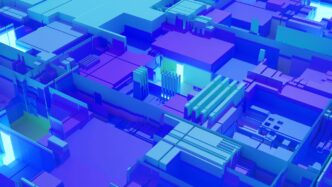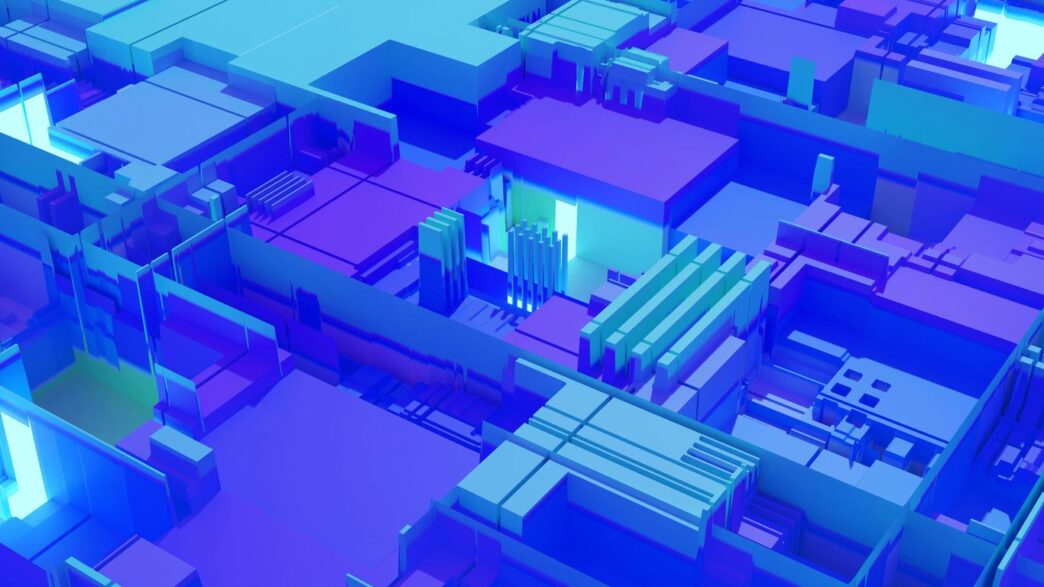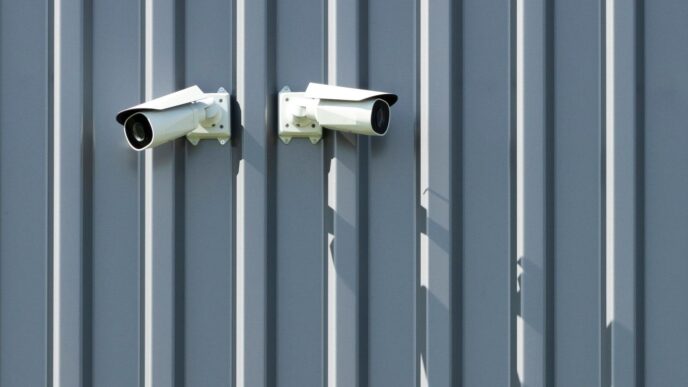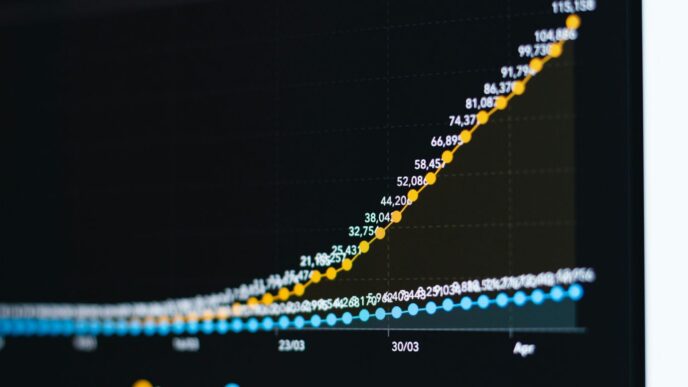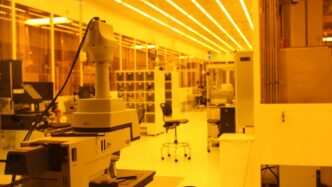The world of technology moves fast, and keeping up can feel like a full-time job. It seems like just yesterday we were talking about the big tech shifts of 2021, and now we’re already looking ahead. This article unpacks some of the most exciting latest trends in technology that are shaping our world right now. From smarter AI to greener tech and new ways of connecting, there’s a lot to explore. Let’s take a look at what’s making waves.
Key Takeaways
- AI is becoming more integrated into daily life and business, with specialized models and even quantum computing playing a bigger role.
- Connectivity, especially with 5G, is changing how businesses work and collaborate, making everything faster and more connected.
- Green technology is gaining traction, focusing on energy efficiency in computing and finding new ways to help the environment.
- Financial services are getting a makeover with new tech like InsurTech and blockchain, changing how risk and rewards are handled.
- The way we move is transforming with self-driving tech and smart city infrastructure, making journeys and urban living different.
AI Unleashed: The Neural Engine Redefining Businesses
Artificial intelligence is no longer just a buzzword; it’s actively reshaping how businesses operate. Think of it as a new kind of engine, a neural engine, powering everything from how we understand customers to how we develop new products. It’s pretty wild to see how quickly this is happening. We’re talking about AI moving beyond simple automation into areas that require a lot more thought and creativity.
Ambient Intelligence and Cognitive Computing
This is about making technology more aware of its surroundings and our needs. Instead of us telling our devices what to do all the time, ambient intelligence means systems can anticipate what we might want or need. Cognitive computing takes this a step further, aiming to mimic human thought processes. This could mean AI systems that can learn, reason, and even understand context much like we do. Imagine a customer service bot that doesn’t just follow a script but actually understands your frustration and responds empathetically. Or a smart home that adjusts lighting and temperature based on who is in the room and what they’re doing, without you having to ask.
Generative AI and Specialized Models
Generative AI is the part of AI that can create new content – text, images, music, you name it. It’s like having a creative partner. Businesses are already using it to write marketing copy, design product prototypes, and even generate code. But the trend is moving towards more specialized models. Instead of one giant AI trying to do everything, we’re seeing smaller, highly trained AIs that are really good at specific tasks. For example, an AI trained specifically on medical research papers can help doctors find relevant information much faster than a general AI could. This specialization means more accuracy and efficiency for particular business needs.
- Content Creation: Generating marketing materials, social media posts, and product descriptions.
- Product Design: Creating initial design concepts and variations for physical products.
- Software Development: Assisting programmers by writing code snippets or suggesting solutions.
- Data Analysis: Summarizing complex reports and identifying key trends.
Quantum Computing’s Role in AI Advancement
This is where things get really futuristic. Quantum computing has the potential to solve problems that are currently impossible for even the most powerful supercomputers. When you combine this massive computing power with AI, you get a supercharged engine. Think about complex simulations, like modeling new drug interactions or optimizing global supply chains with millions of variables. Quantum AI could make these kinds of calculations happen in minutes instead of years. While still in its early stages, the progress here is significant, and it promises to push the boundaries of what AI can achieve even further. It’s not something most businesses are using today, but it’s definitely on the horizon for tackling the biggest challenges.
Connectivity Rewritten: Driving Transformational Value
It’s pretty wild how much things have changed with how we connect, right? Businesses are really leaning into digital stuff, and that means connectivity is more important than ever. Think about it: if you can’t get to your data or talk to your team easily, how are you supposed to get anything done? This digital-first era is all about making sure everyone and everything can talk to each other without a hitch. The market for digital transformation was already huge, and it’s just getting bigger. We’re talking about billions of dollars, and it’s growing fast. A lot of big companies are already deep into this, trying to figure out how to use AI and other new tech.
The Impact of 5G Networks
So, 5G is a pretty big deal here. It’s not just about faster phone speeds, though that’s nice. For businesses, it means way less lag and a much more stable connection. This lets companies do things they couldn’t before. For example, banks can now offer services that happen instantly, so you always know what’s going on with your money. It’s like having a direct line to everything, all the time.
Digital Transformation and Business Integration
When we talk about digital transformation, it’s not just about adding a new app. It’s about changing how the whole business works. Connectivity is the glue that holds it all together. It lets different parts of the company share information and work together smoothly. This means businesses can react faster when customers need something or when there’s a change in the market. It’s about making everything work as one unit, not just a bunch of separate departments.
Enabling Real-Time Collaboration and Data Access
Being able to work together in real-time is a huge win. With better connectivity, teams can share documents, have video calls, and work on projects at the same time, no matter where they are. This also means getting to important data is quicker. Instead of waiting for reports or digging through old files, the information you need is right there. This speed helps make better decisions and keeps projects moving forward. It’s also helping companies become more self-sufficient in their tech development, looking into things like domestic chip manufacturing [8765].
Climate Tech Disruption: Greening Innovation
It’s pretty wild how much technology is stepping up to help our planet. We’re not just talking about recycling more; we’re seeing some serious innovation happening, especially in how we power things and grow our food. The push for greener tech isn’t just about feeling good; it’s becoming a smart business move too.
Energy-Efficient Computing and Green Data Centers
Remember when data centers were these huge energy hogs? Well, things are changing. Companies are really focusing on making hardware and software that use way less power. Think about hybrid systems that smartly switch between different types of computing to save energy. And those massive data centers? They’re increasingly running on solar and wind power, with better battery storage so they can keep going even when the sun’s not out or the wind’s not blowing. This not only cuts down on emissions but also saves a ton of money on electricity bills. It’s a win-win, really.
- Optimized Code: Developers are writing smarter code that gets more done with less computing power.
- Renewable Power: Data centers are shifting to solar, wind, and other clean energy sources.
- Efficient Storage: Better batteries mean renewable energy can be used reliably, day or night.
Sustainable Agriculture and Carbon Capture Technologies
Farming is getting a tech upgrade too. Precision agriculture uses sensors and data to help farmers use just the right amount of water, fertilizer, and pest control. This means better crops with less waste and healthier soil. On another front, carbon capture is becoming a bigger deal. These technologies pull carbon dioxide right out of the air or from industrial sites and store it away. This helps reduce greenhouse gases and can even make soil more fertile. It’s all about feeding more people without wrecking the planet.
| Technology Area | Projected Growth Metric | Target Year | Notes |
|---|---|---|---|
| Precision Farming | Market Revenue to reach $16.35 billion | 2028 | Driven by efficient resource use and improved yields. |
| Vertical Farming | Market Revenue to reach $20.9 billion | 2027 | Fueled by urbanization and demand for local produce. |
| Carbon Capture Capacity | Announced capture capacity to reach 435 million tonnes | 2030 | Focus on reducing atmospheric CO2 and industrial emissions. |
The Role of Technology in Environmental Sustainability
Ultimately, technology is becoming our best tool for tackling environmental challenges. From making our digital lives more eco-friendly to revolutionizing how we produce food and manage our atmosphere, these innovations are key. It’s not just about new gadgets; it’s about rethinking entire systems to be more sustainable. This shift is reshaping industries and investments, pushing us toward a future where progress and planetary health go hand in hand.
Financial Services 2.0: Reinventing Risk and Reward
The world of finance and insurance is changing, and fast. It’s not just about new apps or slightly better customer service anymore. We’re seeing big shifts that are fundamentally altering how risk is seen and managed. Think about it: the way we drive, the way we buy things, even the weather – it all impacts insurance and financial planning in ways we’re just starting to figure out.
InsurTech and Blockchain Integration
This is where things get really interesting. InsurTech companies are shaking things up, often working with startups to bring new ideas to the table. Instead of just testing out a new technology, some big companies are becoming the first major customer for these startups, helping them refine their products. It’s a way to get new solutions out there quicker. Blockchain, on the other hand, is starting to offer more transparent and secure ways to handle transactions and claims. It’s still early days for some of these applications, but the potential for reducing fraud and speeding up processes is huge.
- Increased transparency in claims processing.
- Reduced administrative costs through automation.
- New models for parametric insurance based on verifiable data.
Ecosystems and Platformification Trends
Financial services aren’t really standalone anymore. They’re becoming part of larger digital ecosystems. You might buy insurance when you purchase a car, or get financial advice embedded right into a shopping app. These platforms are expected to make up a big chunk of global sales soon. This means insurers and banks need to think beyond their traditional boundaries and figure out how to work with partners in areas like healthcare, housing, and even mobility. It’s about being where the customer is, when they need you. The tech mergers and acquisitions market, which saw a slowdown recently, might pick up again as companies look to integrate these new capabilities tech M&A activity.
Autonomous Vehicle Data and Risk Modeling
Self-driving cars are a prime example of this shift. As vehicles become more autonomous, the data they generate is becoming incredibly valuable for risk assessment. Instead of just looking at a driver’s history, insurers can now analyze how a car is actually being driven, its surroundings, and potential hazards in real-time. This allows for much more precise risk modeling and, potentially, fairer pricing. It also brings up new questions about liability and regulation, which the industry is actively working through. The challenge isn’t just about the technology itself, but about adapting our old ways of thinking to these new realities before they become the norm.
Mobility 2.0: Next-Gen Infrastructure Transforming Journeys
The way we get around is changing, and it’s not just about faster cars. We’re talking about a whole new infrastructure for how people and goods move. Think about autonomous vehicles, for instance. These aren’t just a futuristic dream anymore; they’re becoming a reality that’s reshaping our cities and how we think about transportation. The global autonomous vehicle market is projected to hit over half a trillion dollars by 2026. This shift means less traffic congestion because these vehicles can communicate and optimize routes. Plus, they’re built with advanced safety features that react faster than a human driver ever could. It’s all about making our journeys safer and more efficient.
Autonomous Systems and Smart Traffic Management
Cities are getting smarter, and a big part of that is how they manage traffic. Using the Internet of Things (IoT), cities can collect data in real-time. This helps them predict when roads or bridges might need repairs, extending their life. Automation and robotics are also stepping in to handle tasks that need to be precise. Autonomous systems are key to managing traffic flow better. By connecting different parts of the city’s infrastructure, traffic lights can adjust automatically, and vehicles can be rerouted on the fly. This makes traffic smoother and helps manage resources better, which is pretty important as more people move into urban areas. It’s a complex system, but the goal is to make city living easier.
The Evolution of Passenger Cars with Advanced Technologies
Your everyday car is getting a serious tech upgrade. We’re seeing more and more advanced driver-assistance systems (ADAS) and fully autonomous driving (AD) features. These technologies aren’t just about making driving easier; they’re also expected to boost productivity. Imagine being able to work or relax during your commute instead of focusing solely on the road. By 2035, it’s possible that a significant portion of new passenger cars sold will have these advanced technologies. This evolution could also change how we own cars, with shared mobility models becoming more common and potentially lowering costs for users. It’s a big change that could impact everything from car sales to how we use our vehicles daily. For those looking at the future of transportation, understanding these shifts is key to navigating evolving dynamics.
Smart Cities and IoT for Urban Environments
Smart cities are all about using technology to make urban life better, more sustainable, and more efficient. The Internet of Things (IoT) is a huge part of this. It connects devices and systems, allowing cities to gather and analyze information constantly. This data helps optimize everything from traffic lights to energy use and even public safety. Think about how much easier it would be if your city could automatically adjust resources based on real-time needs. However, all this data collection brings up important questions about privacy and security. We need strong rules and security measures in place to make sure this technology is used responsibly. It’s a balancing act between innovation and protecting citizens’ information. The integration of IoT is really the backbone of creating these interconnected urban environments that aim to improve city services and overall efficiency.
Cyber Sanctuaries: Fortifying the Digital Frontier
As we spend more of our lives online, keeping our digital spaces safe is becoming a really big deal. It’s not just about protecting company secrets anymore; it’s about making sure our personal information stays private and that we can trust the systems we rely on every day. Think about it – from banking to chatting with friends, almost everything has a digital component. This means the bad guys are always looking for new ways to get in.
Advanced Cybersecurity Measures
We’re seeing a big shift towards smarter security. Instead of just setting up firewalls and hoping for the best, companies are using AI and machine learning to spot trouble before it even happens. These systems can learn what’s normal for a network and flag anything that looks out of place. It’s like having a security guard who can predict when someone might try to break in. This also means we’re moving towards security that can change on the fly, adapting to new threats as they pop up. It’s a constant game of catch-up, but with smarter tools, we’re getting better at it.
- AI-powered threat detection: Systems that learn and adapt to new attacks.
- Adaptive security architectures: Security that can change its defenses in real-time.
- Behavioral analysis: Monitoring user and system actions to spot unusual activity.
Protecting Data Privacy and Consumer Trust
Keeping data private is a huge challenge. With so much information being collected, it’s easy for sensitive details to fall into the wrong hands. That’s why strong encryption is so important. It scrambles data so that even if someone gets it, they can’t read it. Plus, rules like GDPR in Europe and new laws popping up in the US are forcing companies to be more upfront about how they use our information. They need to ask for permission and make it clear what they’re doing with our data. It’s all about giving people more control and building that trust back up.
| Regulation/Act | Effective Date | Key Focus |
|---|---|---|
| GDPR | May 25, 2018 | Data privacy and protection for individuals in the EU |
| CCPA/CPRA | January 1, 2023 | Consumer rights regarding personal information collected by businesses in California |
| DORA | January 17, 2025 | Digital operational resilience for the EU financial sector |
Robust Threat Detection and Quantum-Resistant Technologies
Spotting threats means being proactive. We’re using advanced tools that give us a clear view of everything happening on our networks. A big part of this is the idea of ‘zero trust’. This means we don’t automatically trust anyone or anything, even if they’re already inside our network. Every access request has to be checked and verified. It sounds strict, but it stops threats from spreading if they do manage to get a foothold. And looking ahead, there’s a lot of work going into ‘quantum-resistant’ technology. This is because super-powerful quantum computers could break today’s encryption. We need to get ahead of that curve to keep our data safe in the future. The cybersecurity market is growing fast, with billions being invested to stay ahead of cybercriminals.
Looking Ahead: What’s Next?
So, we’ve talked about a bunch of tech stuff that’s changing things fast. From AI getting smarter to how we connect everything, and even how tech can help our planet, it’s a lot to take in. It feels like every day there’s something new popping up. The big takeaway here is that staying on top of these changes isn’t just for tech geeks anymore; it’s pretty important for pretty much everyone. Whether you’re running a business or just trying to figure out your own gadgets, understanding these trends helps you keep up. The future is definitely here, and it’s moving at warp speed. It’s going to be interesting to see what happens next, and how we all adapt to it.
Frequently Asked Questions
What is ‘Ambient Intelligence’ and how is it changing businesses?
Ambient intelligence is like having smart tech that understands what you need without you even asking. Think of smart speakers that play your favorite music when you walk in the room. It’s making technology blend into our surroundings so smoothly that it feels natural, helping businesses solve problems quickly, like checking inventory in a store automatically.
How is 5G making things faster for businesses?
5G is the next generation of mobile internet. It’s way faster than older networks and lets devices talk to each other almost instantly. This means businesses can share information and work together much quicker, like banks giving you instant access to your money or letting you do real-time video calls with customers anywhere.
What does ‘Climate Tech’ mean for the environment?
Climate tech is all about using technology to help our planet. This includes making computers and data centers use less energy, like using solar power. It also involves new ways to grow food more efficiently and methods to capture carbon dioxide from the air. The goal is to reduce pollution and protect nature.
How are banks and insurance companies changing with ‘Financial Services 2.0’?
Financial Services 2.0 is about new tech changing how money and insurance work. Companies are using things like InsurTech (tech for insurance) and blockchain (a secure way to record transactions) to offer better services. They’re also looking at new ideas, like how self-driving cars change insurance, and working with other companies to create helpful apps and services.
What are ‘Smart Cities’ and how do they use technology?
Smart cities use technology to make living in cities better and more eco-friendly. They use sensors and the Internet of Things (IoT) to manage things like traffic lights, save energy, and keep public spaces safe. This helps reduce traffic jams and makes city services run more smoothly.
Why is ‘Cybersecurity’ so important now?
As we use more technology, it’s super important to keep our digital information safe. Cybersecurity means using strong tools and methods to protect our data from hackers and online threats. It’s also about making sure our personal information stays private and that we can trust the systems we use every day.

